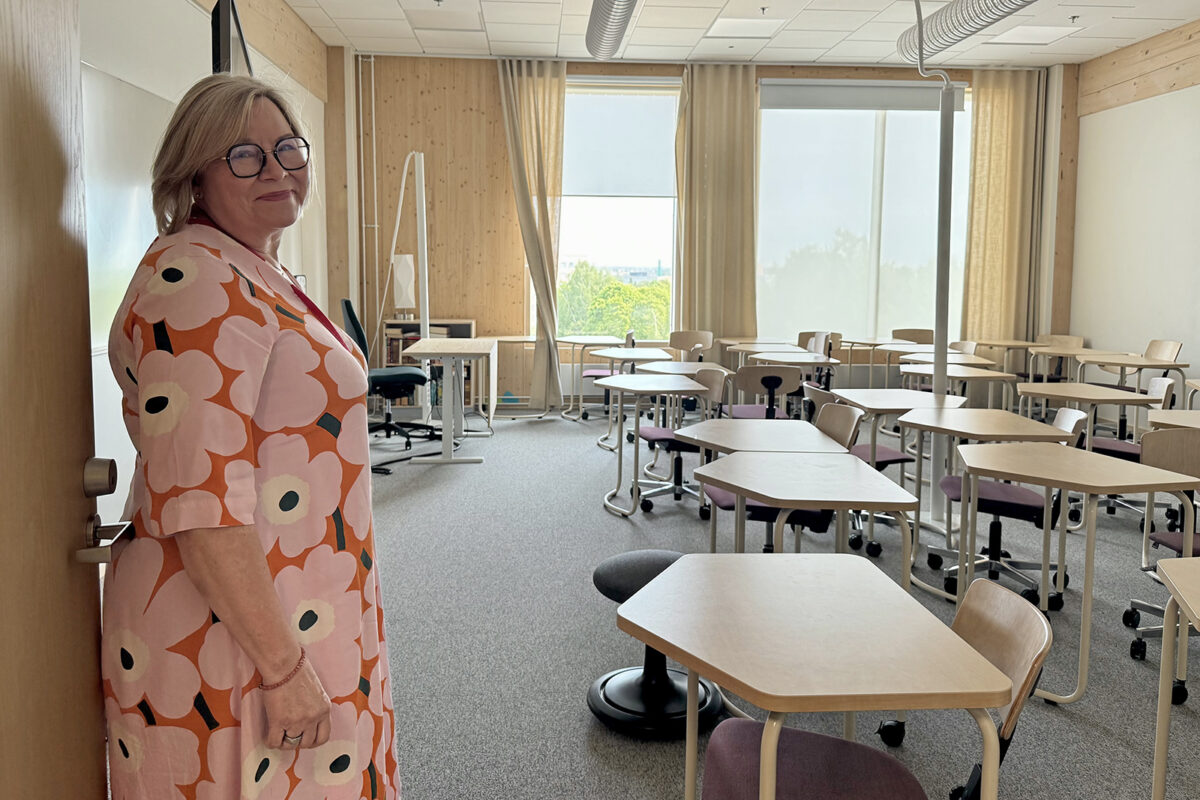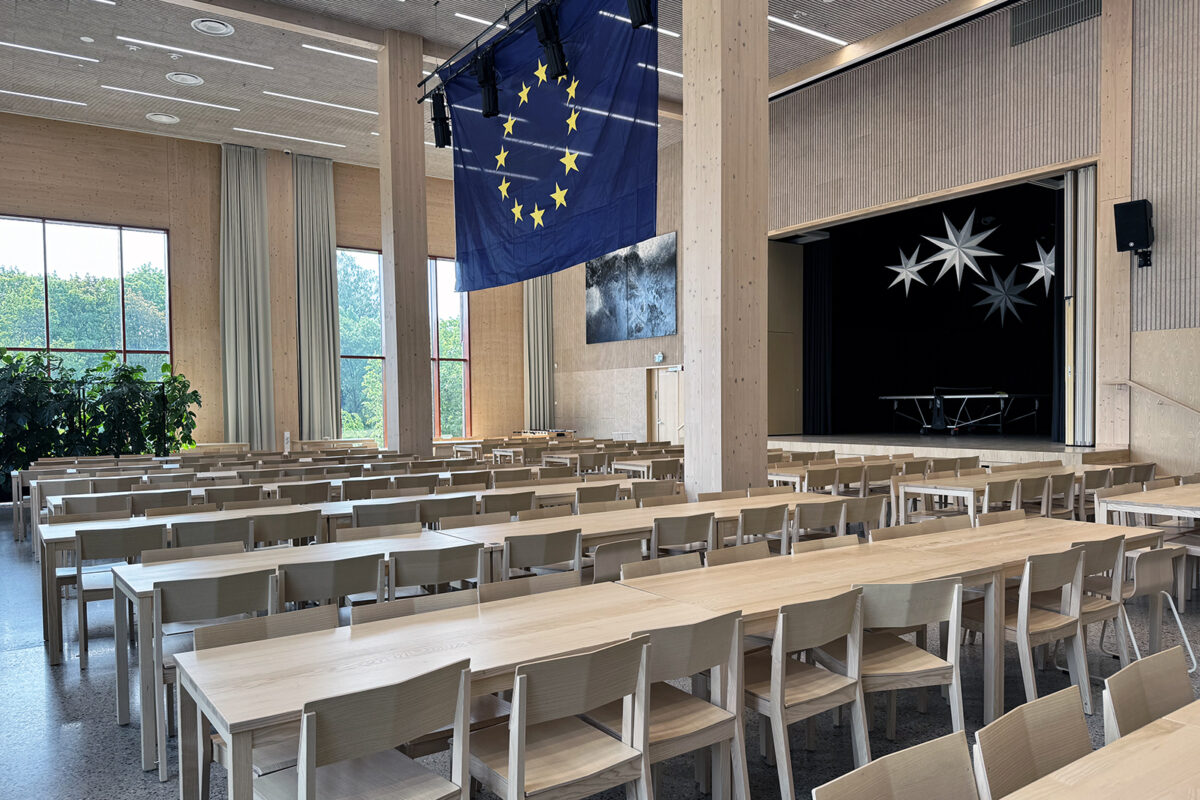Modern wooden school reduces emissions and wins over its users – ‘Soundscape is really calm’

Modern wooden schools are appreciated by their users for their excellent acoustics and fresh indoor air. Among the newest of its kind is the building of the Helsinki Upper Secondary School of Natural Sciences on the Kumpula campus of the University of Helsinki.
On her very first visit, Principal Kaisa Tikka of the Helsinki School of Natural Sciences noticed that the school’s new building was different from any she had seen before.
’This wasn’t the first time I moved into a new school right after the building was completed. Moving to Kumpula was a whole new experience. We were met by a wonderful smell of fresh wood and none of the construction dust you would expect,’ says Tikka, thinking back to how it was about two years earlier.
The Helsinki Upper Secondary School of Natural Sciences, affectionately known as Hellu, is now located on the Kumpula campus of the University of Helsinki. The five-storey building stands tall on top the hill. The classrooms enjoy an imposing view, all the way to the Vanhankaupunginlahti bay, the original site of the town of Helsinki.
The building facade consists of vertical boarding allowed to weather naturally. In the interior, the structures made of massive wood are mainly left exposed. According to the design company Sweco, the building contains over 1,700 cubic metres of wood.

Thanks to wood, less emissions in construction
When planning the new school building in the campus, it was more or less clear from the outset that wood would be preferred, says Anne Pitkänen, Senior Construction Engineer at the University of Helsinki.
’It’s not often these days that the university undertakes new construction; it’s more common that we renovate the existing buildings. But now that a new building was needed, we wanted to go for a wooden one that causes less emissions. It has many other advantages, such as good quality of indoor air, good acoustics and attractive visual appearance,’ Pitkänen says.
According to a recent study by Aalto University, wood construction can reduce the initial-stage emissions of new buildings by up to one third.
After two terms of use, many of these advantages have been found to be true. Principal Kaisa Tikka is particularly pleased with the building’s acoustics.
’The acoustics are incredibly good. Of course, they’re affected by many things besides the use of wood, but I’ve never worked in a school where they’d be this god,’ Tikka says.
She is also extremely pleased with the abundance of natural light and the beautiful wooden surfaces.
’There’s no denying that wood is a really beautiful material. The visual appearance of spaces has a great impact on how pleasant they feel and therefore on the students’ wellbeing and learning. They, too, have said they like the presence of wood, the natural light and not seeing just white walls,’ Tikka says.

Photo: Riikka Lamminen
Students’ wooden desks are a carbon storage
About a year after the Hellu building, a wooden school and daycare centre were completed in the Tiistilä district in Espoo, next to Helsinki. Other modern wooden school buildings can be found in Pakila (Helsinki), as well as in Oulu, Kuhmo and Imatra.
Nor is this just a Finish phenomenon: the city of Berlin, for example, decided a few years ago to construct over 30 new wooden schools.
’Right now, we have no plans for new buildings, but if the need should arise, I believe we’d go for wood again, since we have such good experiences from the Kumpula school and the Hyytiälä Forest Station,’ says Anne Pitkänen, Senior Construction Engineer at the University of Helsinki.
Pitkänen goes on to say that eco-friendliness is a part of the Hellu building in many other ways, too. The school is equipped with solar panels and geothermal heating .
The ground floor lobby and the lunch room contain beautiful wooden furniture, while the desks in the classrooms are vintage wooden ones.
’They’ve simply been sanded and refurbished before the move. They’re of massive wood, so their life span is really long,’ Kaisa Tikka says with obvious pleasure.
Construction without scaffold sheeting
The construction of the school in Kumpula began in the summer of f2021 and completed in two years, in the summer of 2023. Senior Construction Engineer Anne Pitkänen says that everything went smoothly and according to schedule. The only thing that took a bit longer than estimated was the construction permit.
’That was because of fire safety, which always requires special attention in a wooden building. Still, everything related to this and all the constraints can be resolved at the planning stage,’ Pitkänen says and continues that the solutions used in the Kumpula school include treatment with fire retardants, compartmentation and sprinkler systems.
What was exceptional during the construction was that, despite the building being five stories high and standing on top of a hill, no scaffold sheeting was used to protect the site against rain.
’Installing scaffold sheeting in a case like this would have been an extreme challenge and very expensive. We looked for other solutions, which included temporary drainage routes to keep the structures free of water. Of course, we did monitor, and still do, the behaviour and humidity of the CLT elements,’ Pitkänen says.
Now that the building has been in use over one winter, Pitkänen thinks it is safe to say that it functions just as it should.
’There’s been hardly any need for repairs, just some minimal adjustments. The users – the staff and students – are happy, and that’s our greatest reward,’ Pitkänen says.
And the users are indeed many. At the moment, the Helsinki Upper secondary School of Natural Sciences has about 1,000 students, even though the building was dimensioned for 900. Principal Kaisa Tikka explains that this is due to the shortage of space in upper secondary schools in Helsinki.
’Even though we’re so many, the soundscape here is really calm, and you can’t really see signs of wear anywhere so far, Kaisa Tikka says, clearly pleased with her wooden school.